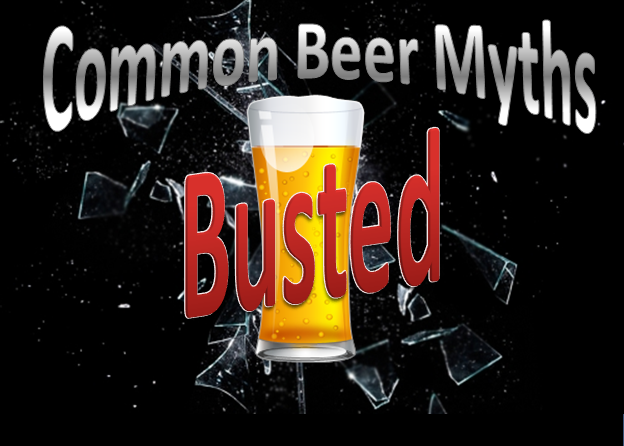Beer myths are a dime a dozen. While craft beer lovers may know a thing or two about beer, there are too many falsehoods about beer permeating popular culture. I’m making it my mission to dispel those myths in one fell swoop!
Temperature Skunks Beer: 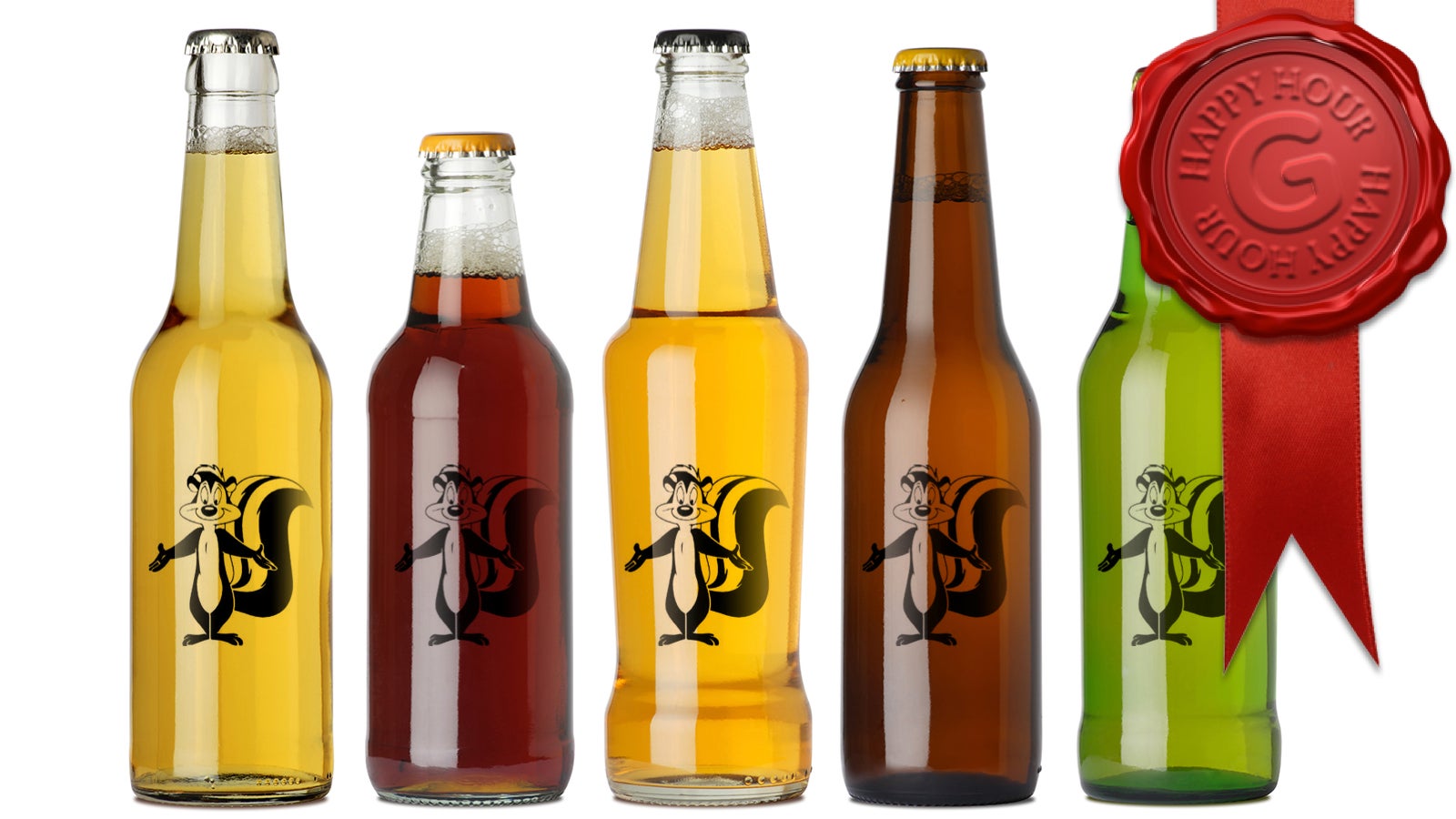
This is one of the most popular misconceptions that even informed beer drinkers have. While temperature increases the speed of the aging process in any food or drink, the real enemy of beer is light. Beer can stay at room temperature and above for extended periods of time without any change in flavor, but even minutes in sunlight can have adverse affects on the taste of a beer.
To combat light exposure, most beers are served in brown bottles. Green and clear bottles allow beer to be more easily exposed to light which is why it isn’t used as often as brown. Something that you may see to help even further are high-walled six packs which try to protect every last inch of beer from being exposed and, potentially, skunked.
If you’re worried about your beer going through temperature changes, think about this. A lot of breweries fill their bottles and cans cold, they are shipped cold, and then either put on a shelf or in a store cooler. If temperature changes really killed beer flavor you would never see room temperature beer on store shelves.
Bottles are Much Better than Cans: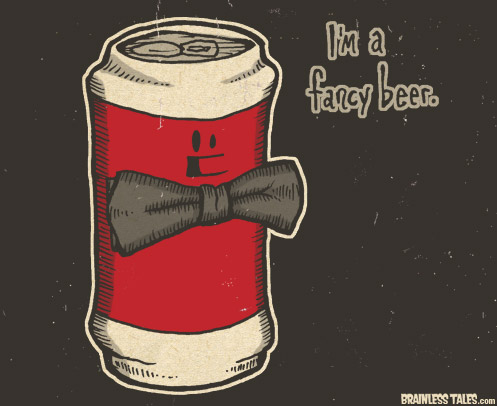
I get it, you’re used to seeing good beer in bottles, and bad beer in cans. Cans, therefor, must be for cheap, bad beer. Wrong. While cans aren’t as popular as bottles in the craft world, they are making a huge comeback. So why did cans get such a bad rep? Many people claim that cans give beer a metallic taste. That may have been true years ago, but nowadays there is a chemical liner in all cans that eliminate any flavors from seeping into your beer. If you are getting any metallic taste with a modern beer, it is because your tongue is on the outside of the can, an in turn you’re just tasting the can. That’s the reason that you are supposed to taste foods on spoons upside-down, so your tongue hits the food only, not the metal spoon. To avoid metal beer can taste, pour it into the perfect beer glass.
Truth is, cans are the superior packaging option. They are lighter which saves on shipping costs, more recyclable, can be sold to places like sporting stadiums and public places where glass is not allowed, and most importantly it allows zero light to touch the beer. Maybe the most important advantage canning has is that cans don’t allow oxygen to mix with beer. While bottles do a good job, they still aren’t sealed as tight as cans, and, over time, this can lead to bad beer.
Dark Beers are Strong and Bitter: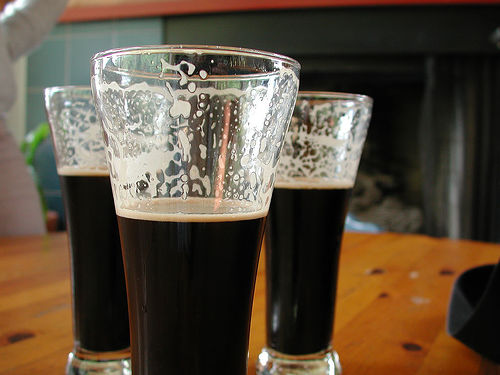
I guess this isn’t always a myth, but color alone is not a good indicator of taste. Yes there are some bitter dark beers out there, and yes some of those beers are strong, but the color itself is just a reflection of the malts used, not the taste. Dark beers are made using malt that is roasted for longer periods of time than lighter malts. These malts can impart a myriad of flavors from sweet caramel and chocolate, to burnt bitter and smoke. Think of dark malts the same way you think of grilling or barbecue. Yeah sometimes its not good to burn the outside of a steak, but a brisket that has been smoked to perfection will have a caramelized bark around the outside that is full of delicousness.
The strength of beer comes from a variety of things. In simple terms, alcohol is made from yeast eating sugar and releasing alcohol and CO2 as byproducts. To make a stronger beer, you need to have more sugar in the initial wort. Then you need to have a yeast that can produce high amounts of alcohol. Yeasts have what’s called an “attenuation rate” that determines how much of the sugar in the wort they can convert to alcohol. You can have a sugary wort that will stay sweet even after fermentation if the yeast doesn’t have the power to convert all of the sugar to alcohol. Strong beers can be light or dark, color has no affect on the strength of a beer, it’s just how it is fermented.
Beer Needs to be Served Ice Cold: 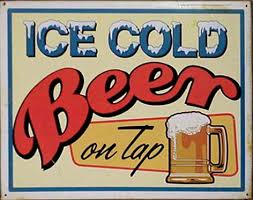
Hey, I’m not here to tell you not to drink an ice cold beer; sometimes there is nothing more refreshing. That being said, not all beers should be served ice cold. My rule of thumb is: the darker the beer is, the warmer it should be served. While it’s not perfect, it is a decent way to determine whether you should allow your beer to warm a bit before drinking to achieve optimal flavor. Serving beer too cold can mask flavor and complexity that the brewers intended the beer to have. Cold IPA’s have less of a hoppy flavor, and ice cold stouts don’t allow the roasted barley to shine like it should.
You’ve probably heard stories that people who have had Guinness in Ireland were served “hot beer”, and that’s not fully true, but they are served warmer than we like. Most American Lagers are served around 34F, while a good stout should be served at whats called “cellar temperature” which is around 55F. I’d serve most craft beers between 40-55 degrees to let out their best flavors.
If you want to play around with your beer temperatures, here’s the best advice I’ve heard: go to a bar and order two beers, one light that is meant to be drank ice cold, and one you want to allow to warm up. While you drink the lighter beer, just let the other beer sit and warm. Try the warmer beer sporadically to see the flavors change as you wait. If you want to speed up the process, have a hand on your second beer while you wait. The heat from your hand will help warm the beer!
Beer Foam is Evil:
I’ll admit, when I first was allowed to pour beer at the bar I worked at, I was a firm believer that there should be no head on a glass of beer. The customer wants as many ounces of beer in their glass as possible, and they don’t want to have to sift through foam to get to their golden elixir. I would pour a perfect pint, then pour out the foam, and fill the glass until only clear beer was overflowing. What I didn’t realize is that the perfect pour should have about a finger and a half of head at the top. The head of a beer helps trap flavors and aroma from escaping out the top of the glass. As you may know, a lot of our taste comes from our sense of smell, a healthy head will only help improve the flavor of the beer.
That being said, there is such thing as too much head. If you have a bad pour you can release too much carbonation and in turn have a flat beer. Also, foam is only 25% beer, so if you have half a glass of beer, and half a glass of foam, you’ll only end up with 75% of a beer in total. No one wants that.
Wine is More Complex than Beer:
We all have that friend/relative. They will never drink a beer because it’s so “simple”. These are the people you should just allow them to have their own opinion while you drink the beer for yourself. The truth is, while wine has been more socially paired with the upper class, beer is much more complex as a drink. Think about it, what goes into wine? Grapes, maybe sugar, and yeast. Sure you can blend different varieties and fruits, but its a very simple drink to make. Beer has a minimum of four ingredients per style, with many having adjuncts to add more complexity to the drink. Beer is said to have about 700 different flavor profiles, while wine has roughly half that amount. Winner– Beer!
Yeast Sediment = Spoiled Beer: 
While traditional beers probably have some type of yeast sediment in them, most people have never had a beer with visible amounts of suspended microbes in it. If yeast is found at the bottom of a bottle, the initial reaction is to think, “Oh no! Something wen’t wrong with this one!” Fear not, that couldn’t be further from the truth.
As I mentioned above, yeast has a limited attenuation rate. Once the yeast colony runs out of food, they stop eating and start dying. The dead yeast settle at the bottom of fermentation tanks, and are usually reused to make new beer, while the little amount of yeast still floating in the beer is usually filtered out before bottling. But many beers are made to be unfiltered which leaves them susceptible to having small amounts of yeast sediment in the bottle.
Other beers go through a process called “bottle conditioning” of “natural conditioning” which is where brewers trap small amounts of yeast and sugar into each bottle of beer (or fermenting vessel) in order to produce CO2, which is trapped by the sealed container and absorbed into the beer. Before CO2 was readily available in tank form, all beers were carbonated this way, or in a similar fashion. If a beer is bottle conditioned, it won’t have a chance to be further filtered and yeast will settle at the bottom.
Many people don’t want to drink the yeast, so if you’re one of them you can just avoid pouring the last half inch of beer into your glass, but in beers like Hefeweizens (which literally means “yeast wheat”) yeast is supposed to be poured into the glass. My family once took a trip to Switzerland, and when they would pour a Hefeweizen they would pour most of the beer into the glass, then swirl what beer is left in the glass to make sure the yeast is mixed well with the remaining liquid (and to produce a frothy head) and then top off the glass with the remaining brew. This is the most traditional way to pour a wheat beer, and if you ever get the chance I suggest you try it out. Besides, yeast is a great source of additional protein!
Beer Before Liquor, Never Been Sicker…:
Thanks to my friend TJ Blanton for reminding me about this myth. Most people will go through college living by this rule, “Liquor before beer, you’re in the clear. Beer before liquor, never been sicker.” The idea is that you can always mix liquor and beer, as long as it is in the correct combination you can avoid becoming terribly hungover.
The truth is, this is both right and wrong. Let me explain.
Picture yourself going out for a night, but before you leave your pregame party you are sipping on some beer just to get warmed up. By the time you get to the bar you are tipsy, and looking to kick it up a notch. You raise your finger over your head, circle it around and yell, “Shots!” This definitely spells disaster for everyone involved.
Now, picture yourself on a similar night, but before you hit the bars you guys are taking shots at home. You’ll most likely be drunker quicker and by the time you get to the bar you’ll just want to sip a beer and be social. Since beer takes 12 ounces to give you the same alcohol intake as one 1.5 ouch shot, you’ll basically be sobering up by drinking beer (as long as you aren’t chugging). Since time cures hangovers, you’ll most likely be less drunk to end the night, and by morning feel pretty good.
The part of this that is myth is that it doesn’t really matter what order you drink, it’s the amount you drink. We all assume that if you start with liquor, you’ll slow down over the course of the night and if you start with beer you’ll only speed up with shots. But if you have the same amount of beers and shots in the same amount of time you’ll be just as drunk (and have just as bad of hangovers) no matter how you distributed the drinking.
For me, I just stick with craft beer from beginning to end, and can’t remember a time I’ve ever had a craft beer hangover. It’s when you drink to blackout that you’ll be paying for it in the morning.
If you have any other myths you’d like me to debunk, leave a comment below and I’ll give you credit for being awesome.
– Cory
